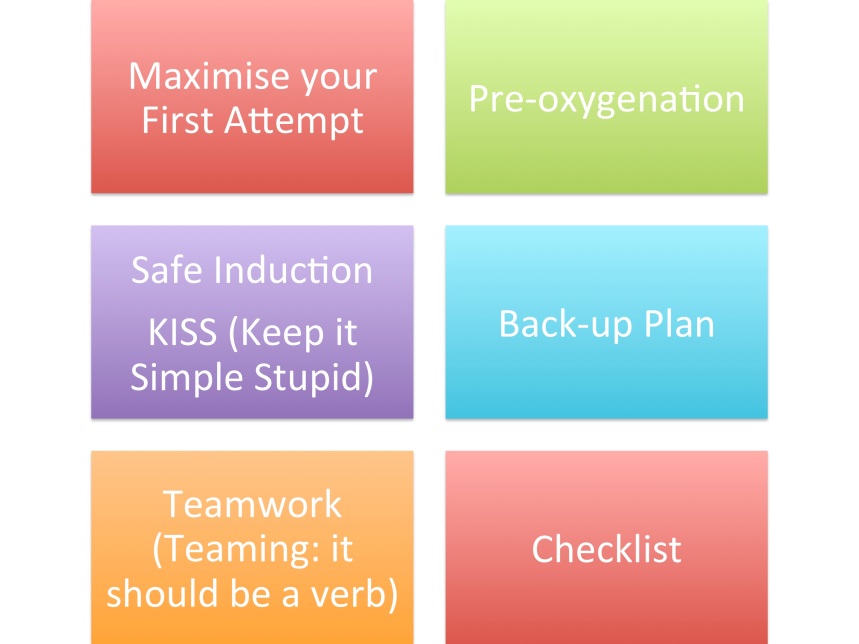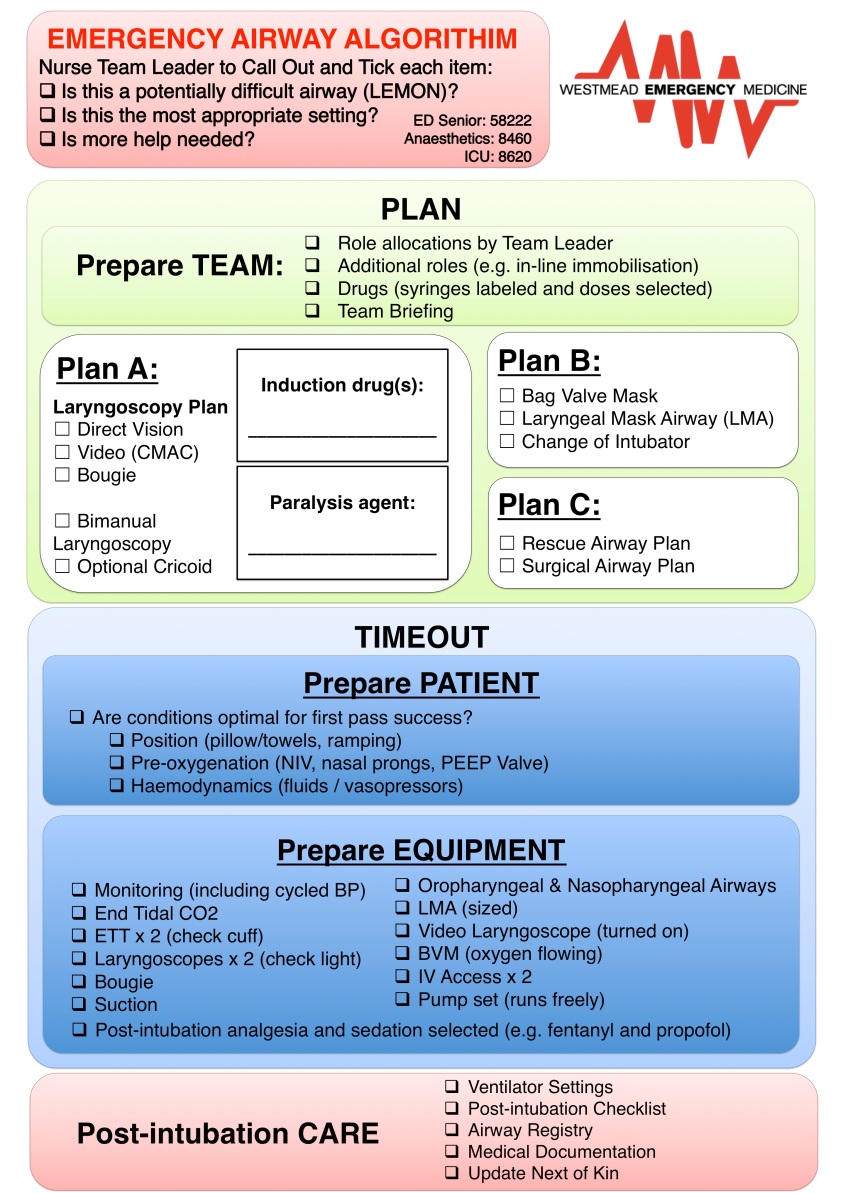Making Emergency Intubation Safer
The ideal emergency intubation should have first pass success, no desaturation (as far as possible) and minimal haemodynamic compromise as the result of the use of drugs or the trauma of laryngoscopy.
Training, procedural technique and standardisation of the process can all help with achieving safe intubation.
So, how do we SAFELY go from this:
To this?
Answer – Prioritise the Basics in the ED:
The Basics
Use an Intubation Checklist
Here is the current Westmead Intubation Checklist which we have developed based on the ‘best of’ other checklists for local use. A checklist should be ideally a team ‘event’, short, sharp and focus on key steps. It should be part of training in a standardised approach to a team based procedure such as Rapid Sequence Intubation. An intubation checklist can be omitted in patients in Cardiac Arrest but in the chaotic critically unwell patient it is if anything more important to avoid missing crucial steps. Not everyone likes a checklist as it is “prescriptive” but we think it is a useful cognitive aid to help the team achieve success in this important emergency procedure:
Post Intubation Checklists are also available and can be useful to prevent the phenomenon of post intubation inertia.
An updated version of the Westmead Emergency Checklist is found here – ED Airway 2016





